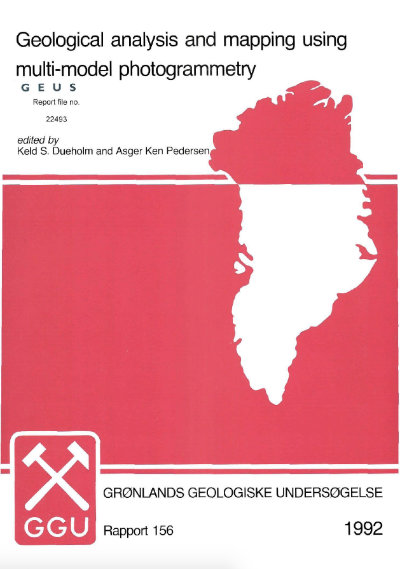Interpretation of flat-lying Precambrian structure by geological photogrammetry along a 65 km coastal profile in Nuussuaq, West Greenland
DOI:
https://doi.org/10.34194/rapggu.v156.8189Abstract
Photogrammetry employing several unequal models was used in the study of a c. 65 km long coastline of Precambrian basement rocks along Qarajaq Isfjord in northeastern Nuussuaq, central West Greenland. A geological profile was drawn parallel to a steep and inaccessible coastline at a scale of 1:50 000, on the basis of photographs at scale c. 1:175 000 taken with a hand-held camera from a helicopter. Two short profiles along the same coast were drawn at a scale of 1:25 000 from photographs at scale c. 1:40 000. The multi-model photogrammetry provided an accurate, flexible and powerful geological mapping tool in inaccessible terrain, whereby the general flat-Iying structure could be analysed. Broken-up remnants of an extensive anorthosite-gabbro complex could be correlated, and several geological features not recognised in the field were discerned. However the application of multi-model photogrammetry along irregular cliff faces is less suitable in folded rocks with complex three-dimensional structures, than in flat-Iying sequences of undeformed rocks.
Downloads
Published
Issue
Section
License
This article is distributed under a CC-BY 4.0 licence, permitting free redistribution and reproduction for any purpose, even commercial, provided proper citation of the original work. Author(s) retain copyright over the article contents.


